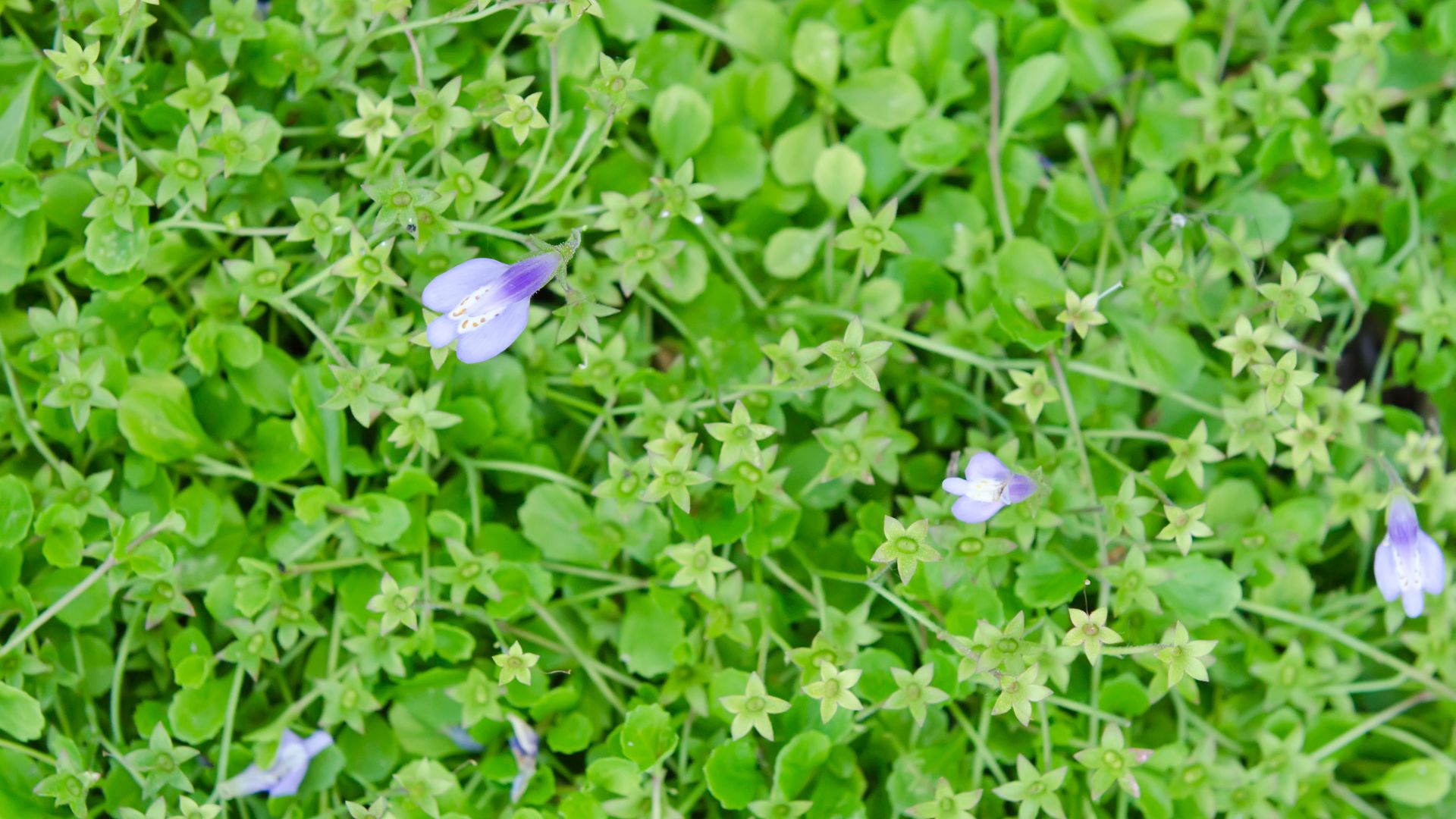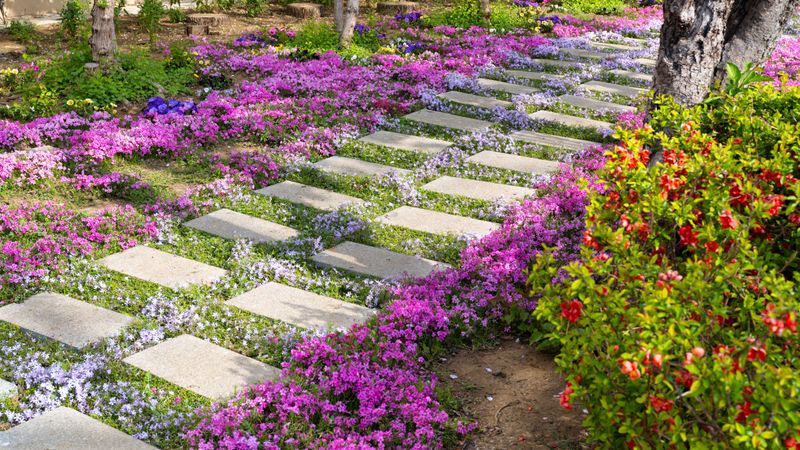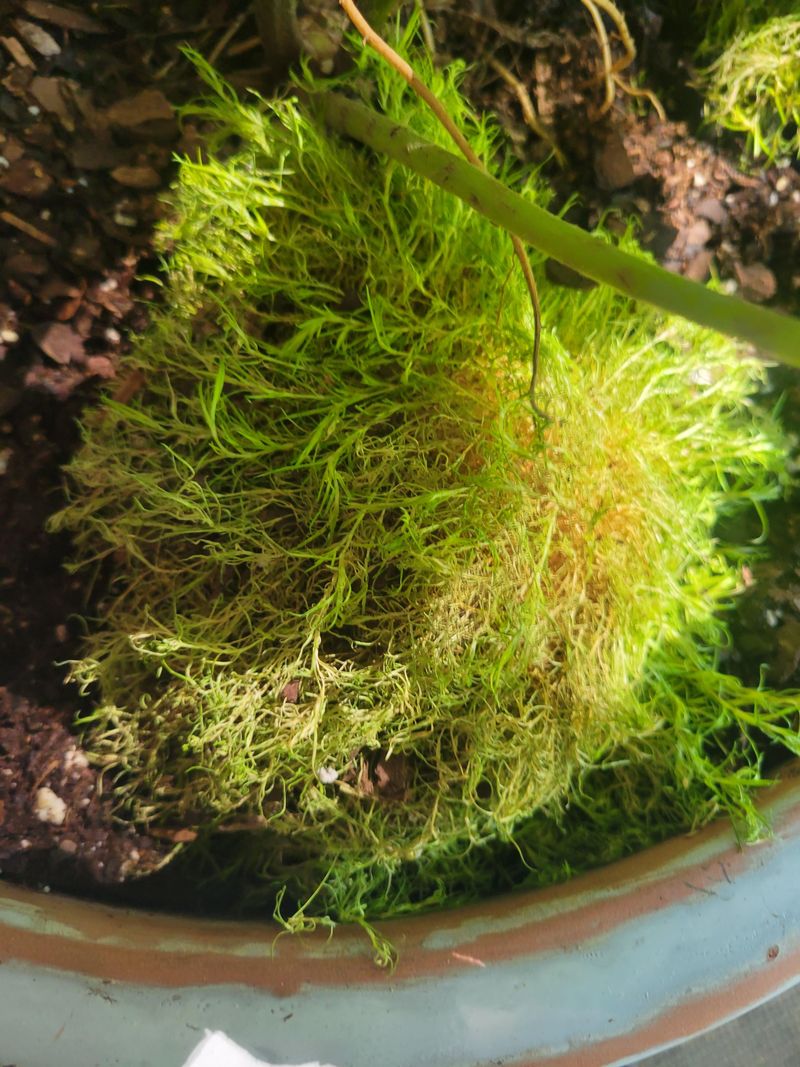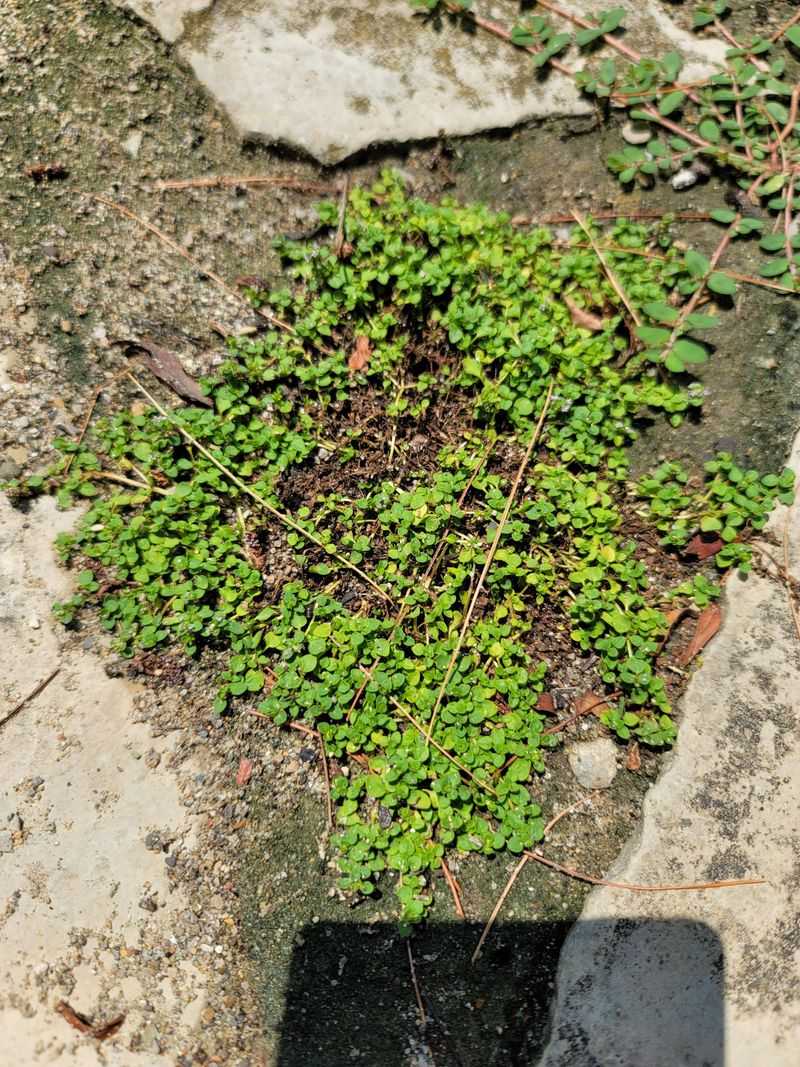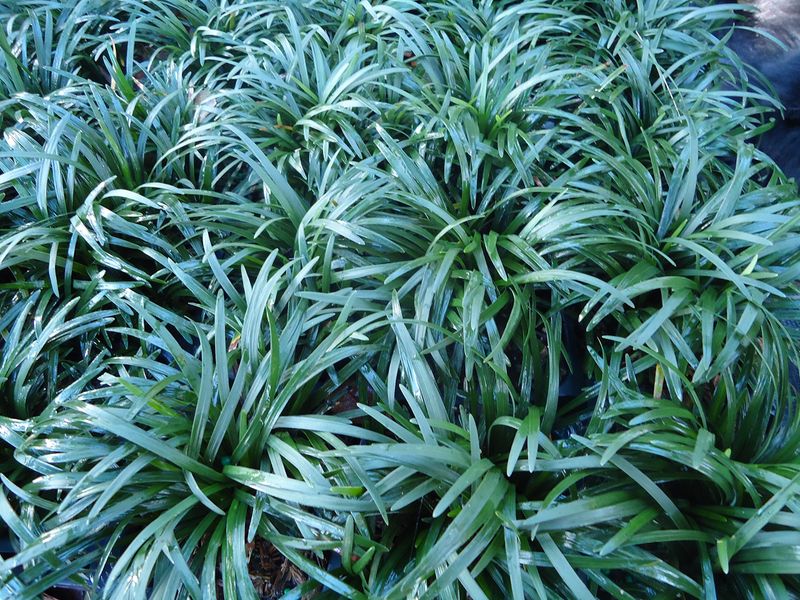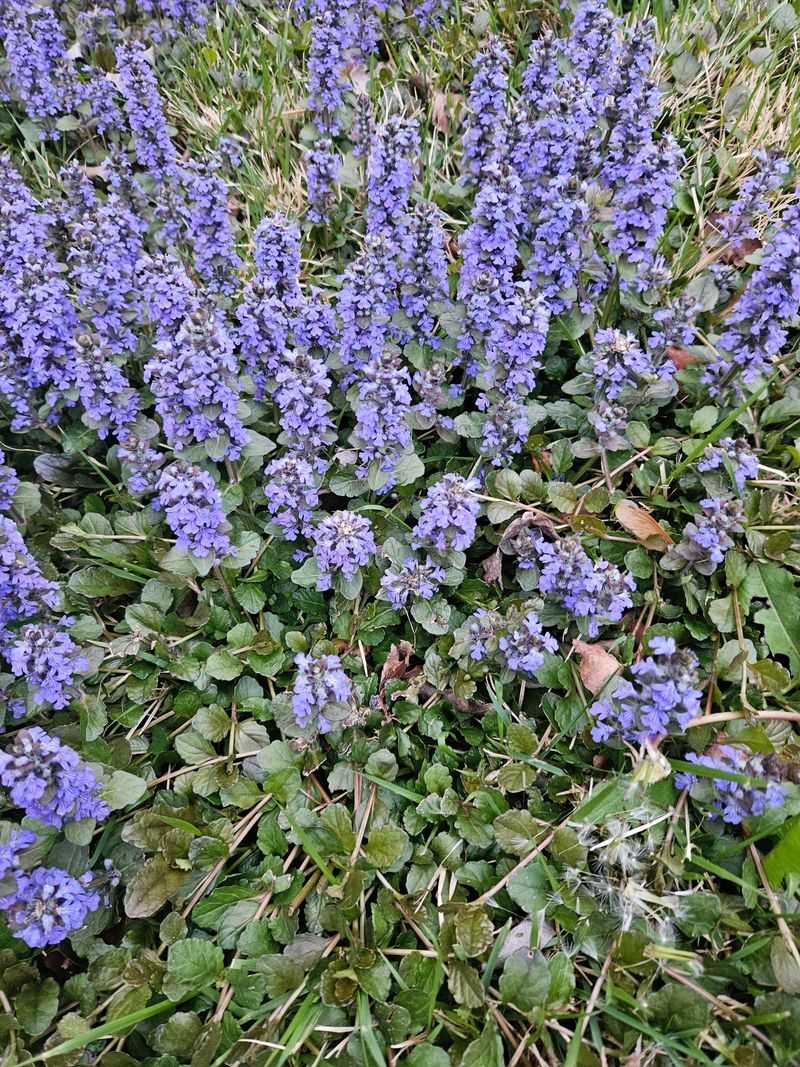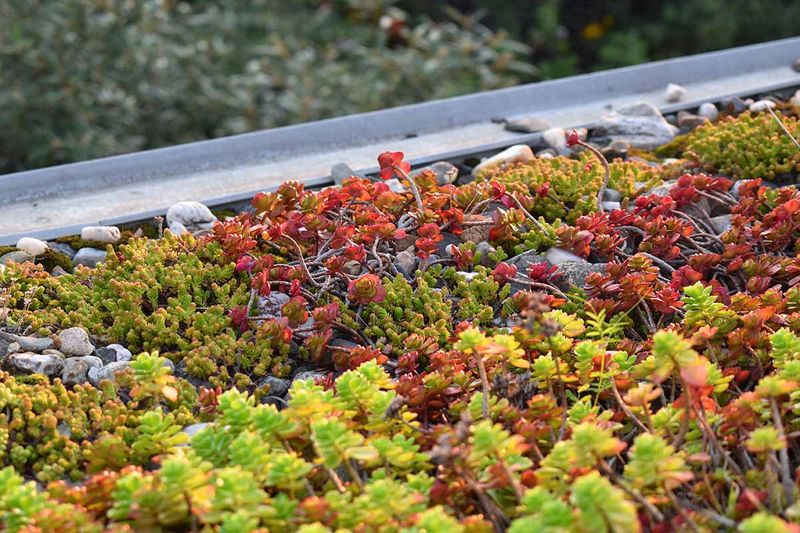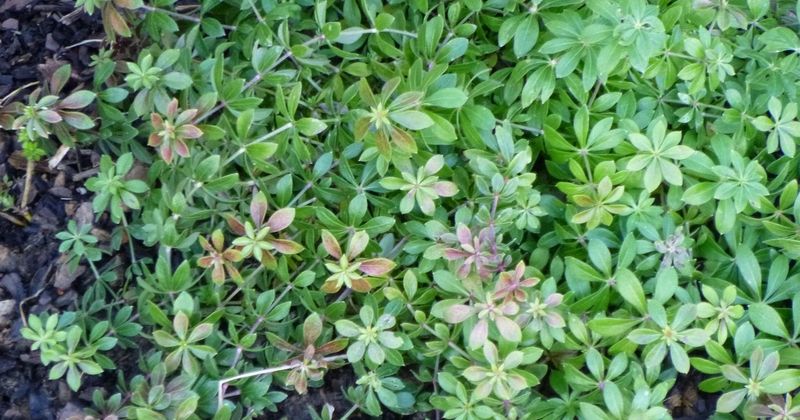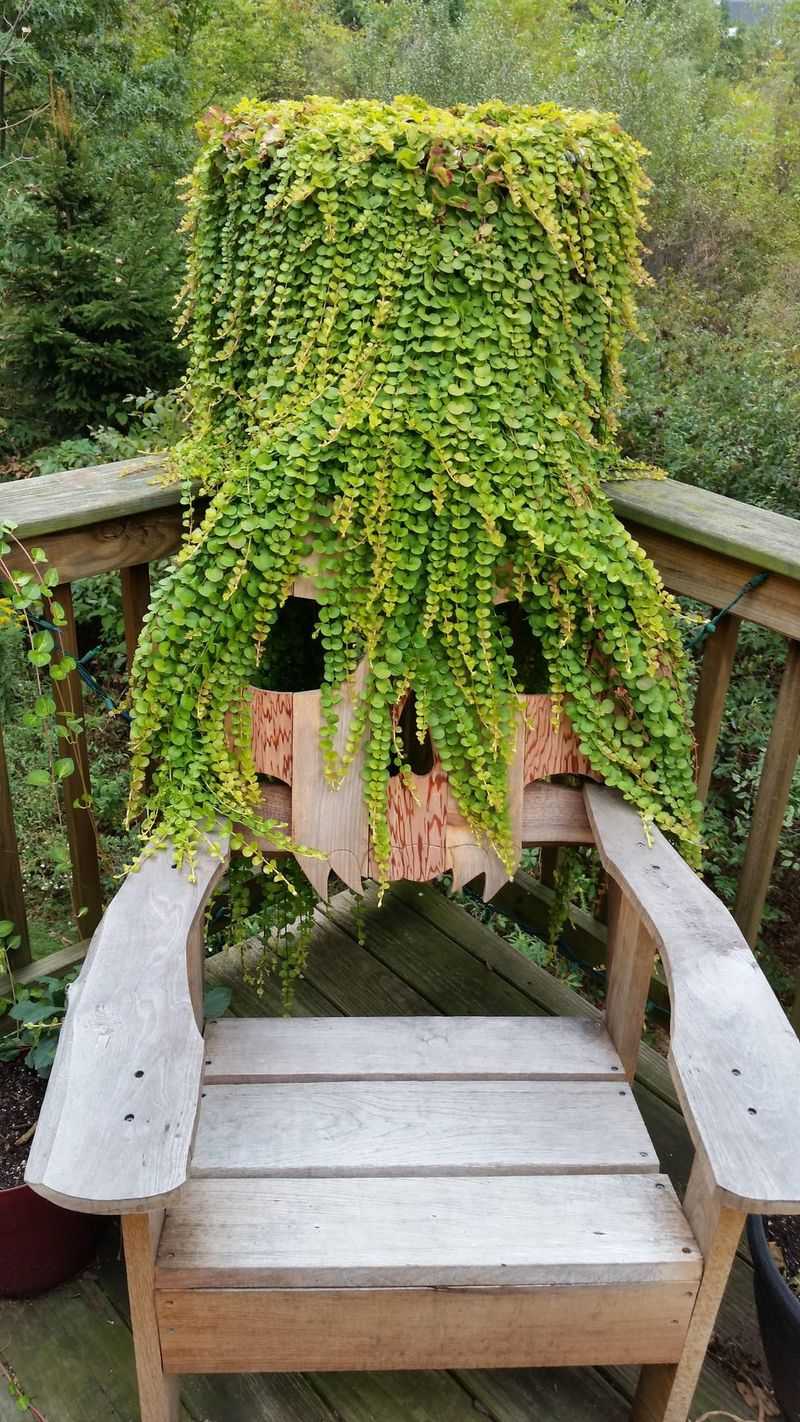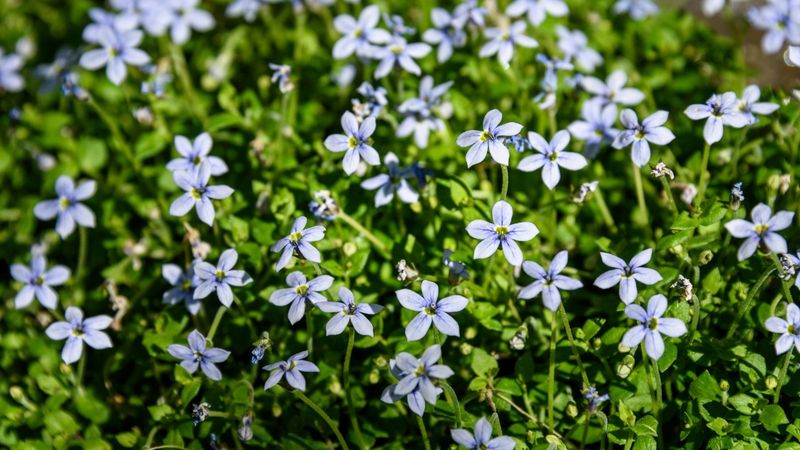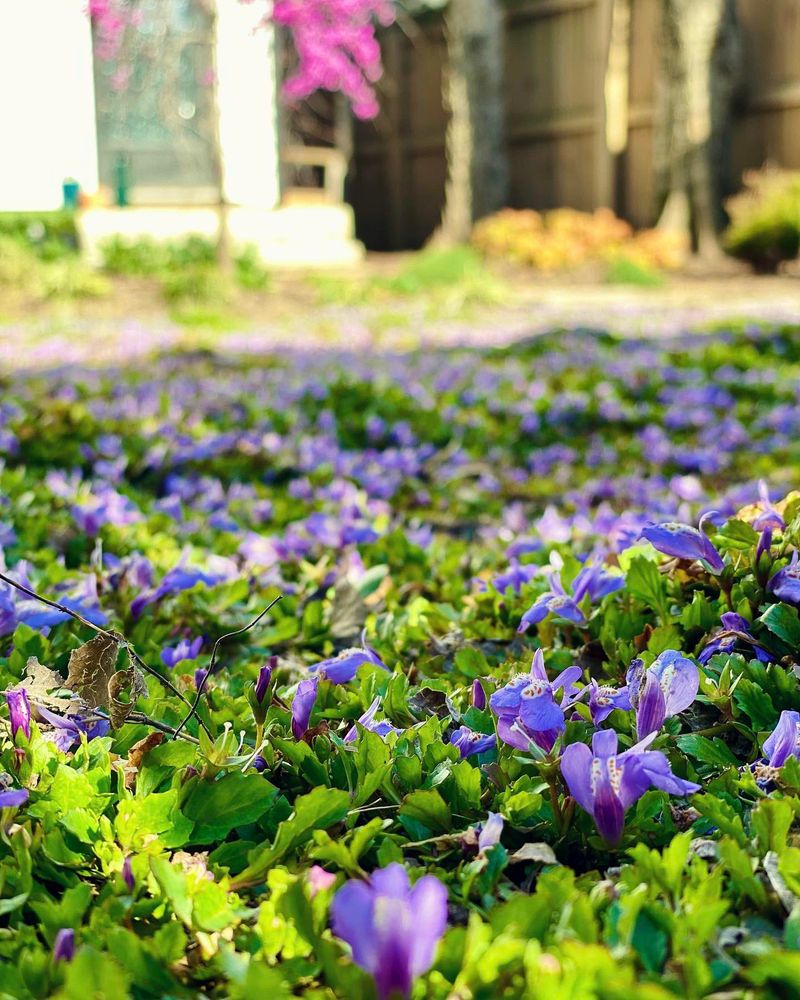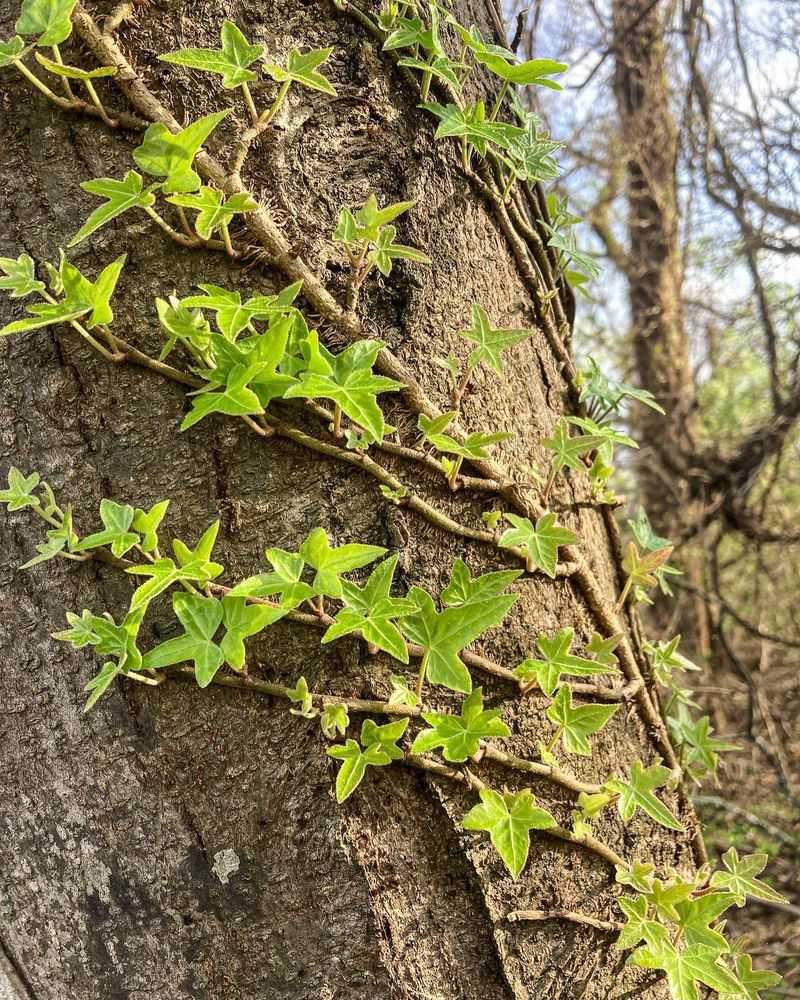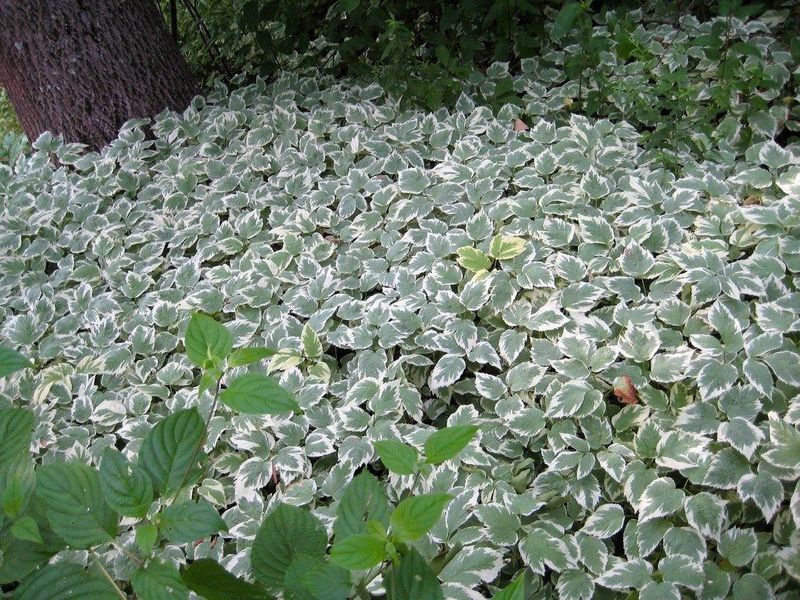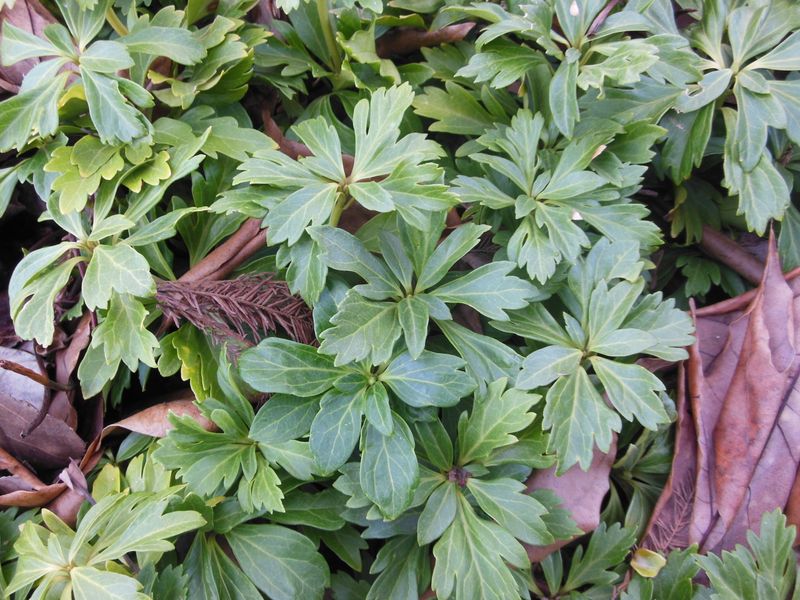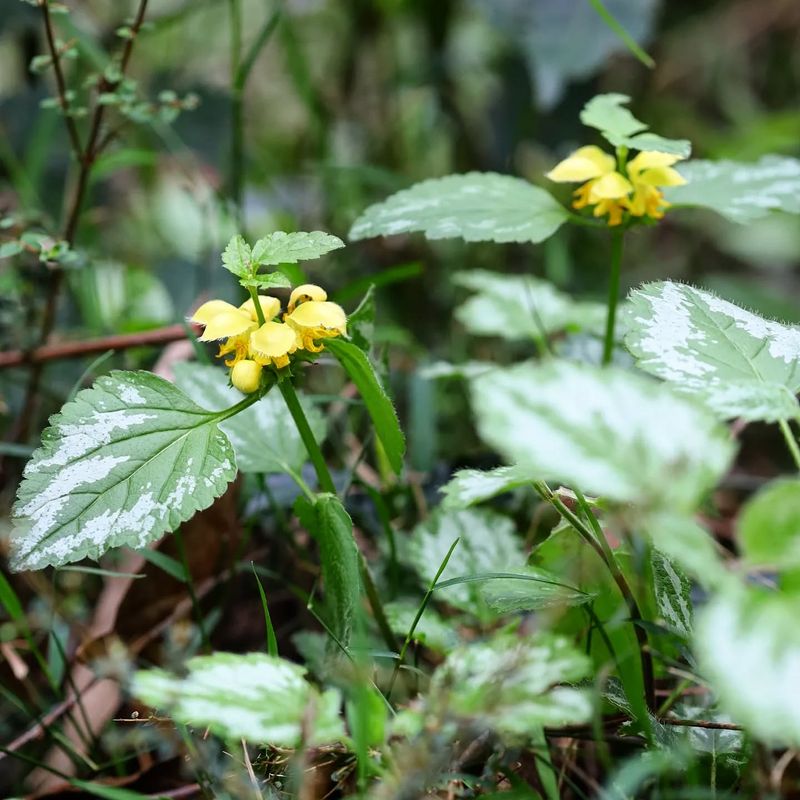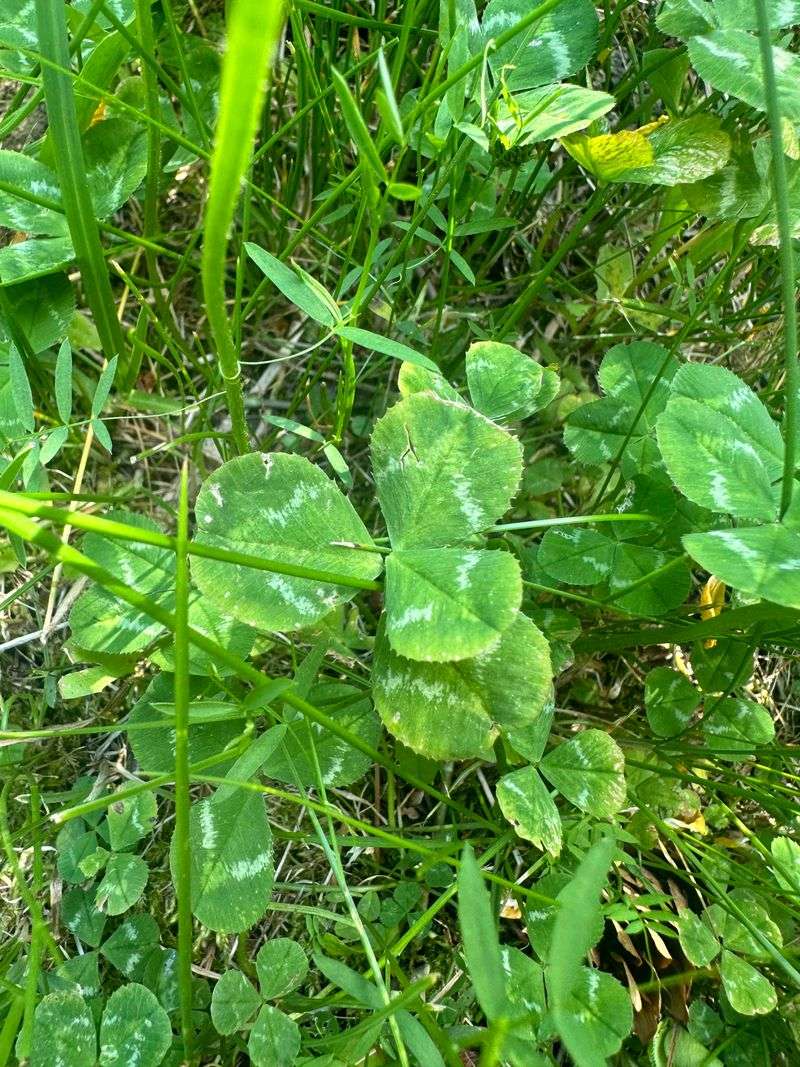Thinking about ditching your lawn for something greener and easier to manage? Ground covers can be a beautiful, low-maintenance alternative—at least in theory. I’ve been down that road myself, and let’s just say, not every option lives up to the hype.
Some ground covers take forever to fill in, leaving you with more weeds than greenery. Others spread like wildfire and end up creeping into places you never wanted them. It can turn into a whole new kind of headache if you’re not careful.
Before you dig up your turf and start planting, it’s worth knowing which ground covers are more trouble than they’re worth. Here’s what to watch out for—and a few reliable options that can actually make your lawn-free vision a reality.
1. Creeping Thyme
After three seasons of trying to establish creeping thyme in my front yard, I’ve learned it’s not the miracle solution garden magazines claim. The delicate stems simply can’t handle even occasional foot traffic, leaving patchy bare spots that never seem to fill in.
Winter hardiness is another issue in zones 5 and below. I lost nearly half my planting after a particularly cold January when snow cover was minimal. The survivors looked ragged until late spring.
Watering requirements are also deceptive. Though drought-tolerant once established, getting thyme to that point requires consistent moisture for months – hardly the low-maintenance alternative most homeowners expect.
2. Irish Moss
Irish moss looks enchanting in garden center displays, with its dense, carpet-like growth promising a velvety green alternative to grass. Reality hits hard when you install it at home though. The maintenance requirements are surprisingly intense, especially during the first year.
Summer heat waves can decimate entire sections overnight if you miss even a single day of watering. My neighbor lost her entire Irish moss pathway during a weekend vacation when temperatures unexpectedly hit the 90s.
Growth rate is painfully slow too. Those tiny 2-inch plugs the nursery sells? They might take three full growing seasons to knit together, leaving you with a spotty, incomplete look that’s hardly the seamless carpet you envisioned.
3. Corsican Mint
The fragrant promise of Corsican mint seduced me into planting it between stepping stones. Two years later, I’m still filling in gaps where it simply refused to spread. Despite its reputation for aggressive growth, mine sulked and retreated instead of conquering new territory.
Heat tolerance is practically non-existent. Temperatures above 85°F cause the edges to crisp and brown, giving the planting a perpetually scorched appearance throughout summer. Even with regular misting, it never looks its best when you’d most want to enjoy it.
Winter presents another challenge entirely. In zones 6 and below, Corsican mint often dies back completely, requiring spring replacement. The expense adds up quickly when you’re replanting year after year instead of enjoying a maturing ground cover.
4. Dwarf Mondo Grass
The garden center employee promised dwarf mondo grass would fill in within a season. That was three years ago, and I’m still looking at distinct clumps with bare soil between them. The glacial growth rate makes this one of the most frustrating ground covers I’ve attempted.
Salt tolerance is another major issue. After one winter of minimal road salt exposure, the edge of my mondo grass planting along the driveway turned yellow and never recovered. For those in regions using road salt, this limitation alone makes it impractical.
Cost becomes prohibitive when you calculate how many plants you’ll need for decent coverage. Spacing recommendations of 6-8 inches means you’ll need about four plants per square foot – at $5-8 per pot, replacing even a small lawn quickly becomes a major investment.
5. Ajuga (Bugleweed)
Ajuga seemed like the perfect solution for the shady side of my house where grass struggled. What the garden books didn’t mention was its tendency to develop crown rot in humid conditions. After a particularly wet spring, nearly half my planting developed black, mushy crowns and died.
The remaining plants looked spectacular for about three weeks in spring when they flowered. The rest of the year? Just a mediocre mat of foliage that deer occasionally browsed, leaving unsightly holes throughout the planting.
During drought, ajuga quickly thins out, creating perfect opportunities for weeds to establish. I spent more time hand-weeding my ajuga patch than I ever did mowing the grass it replaced. For something marketed as low-maintenance, the reality was anything but.
6. Sedum (Stonecrop)
Low-growing sedums have beautiful succulent foliage that garden magazines love to showcase as drought-tolerant lawn alternatives. What they rarely mention is how quickly they deteriorate with even minimal foot traffic. One accidental step left permanent damage in my sedum patch.
Winter appearance is another letdown. Many varieties turn reddish-brown and collapse into mushy heaps after the first frost. My sedum lawn alternative looked like a field of dead vegetation from November through April – hardly the year-round appeal I’d hoped for.
Weed suppression capabilities are surprisingly poor for a ground cover. The widely-spaced growth habit of most sedum varieties allows plenty of sunlight to reach the soil, creating perfect conditions for weed seeds to germinate and establish between plants.
7. Sweet Woodruff
This one has a reputation for thriving in shade, which made it seem perfect for the area under my maple tree. The first year looked promising until summer arrived and the soil dried out. Despite regular watering, the edges constantly browned and retreated.
Spring brings charming white flowers, but they quickly fade, leaving behind a rather ordinary-looking plant for most of the growing season. The much-touted sweet hay fragrance of dried leaves proved elusive in the landscape setting, only noticeable if you actually crushed the foliage.
Establishment takes far longer than advertised. Three years in, my sweet woodruff still hasn’t formed the lush, weed-suppressing mat promised on the plant tag. Instead, I’m left with scattered patches that require regular weeding and look increasingly scraggly as summer progresses.
8. Creeping Jenny
My garden center sells creeping Jenny in hanging baskets, where it cascades beautifully. This led me to believe it would make an excellent ground cover. The reality? In my zone 5 garden, it’s neither vigorous enough to outcompete weeds nor hardy enough to survive harsh winters intact.
The bright chartreuse color that makes it so attractive fades to an unimpressive yellowish-green in full sun locations. Within a single season, the once-vibrant foliage looked washed out and tired, nothing like the catalog photos that convinced me to buy it.
Drought sensitivity became apparent during a dry spell when entire sections crispy-fried despite being labeled as adaptable. The recovery period stretched for weeks, during which weeds happily filled the gaps. I’ve since replaced most of it with more resilient alternatives.
9. Blue Star Creeper
Blue star creeper’s delicate blue flowers and fine texture make it look like the perfect lawn substitute in gardening magazines. My experience tells a different story. After planting between stepping stones, I discovered it can’t handle even moderate foot traffic without showing damage that takes weeks to recover.
Heat tolerance proved disappointing as well. During summer temperatures above 85°F, large patches turned brown despite regular irrigation. The recovery was painfully slow, leaving unsightly dead spots until cool weather returned in fall.
Winter hardiness varies dramatically depending on snow cover. Areas protected by snow sailed through winter beautifully, while exposed sections died back completely. This created a frustrating patchwork effect each spring that required replanting – hardly the carefree ground cover I’d hoped for.
10. Creeping Mazus
Gardening blogs raved about creeping mazus as a lawn alternative that could handle light foot traffic. My experience suggests otherwise. After establishing a test patch, I found even occasional walking left lasting damage that took weeks to recover.
Water needs proved much higher than advertised. During a typical summer week, my mazus required at least three deep waterings to prevent crispy edges and dieback. For a supposed low-maintenance option, the irrigation demands were disappointing.
The purple spring flowers last barely two weeks before fading, leaving a rather ordinary-looking mat of green for the remainder of the growing season. While not unattractive, it certainly doesn’t provide the year-round interest that would justify its demanding nature and poor durability.
11. English Ivy
You might think English ivy’s rapid growth would make it an ideal grass replacement. My backyard experiment quickly turned problematic. Within two seasons, the ivy had climbed 15 feet up a nearby oak tree, requiring careful removal to prevent damage to the tree bark.
The dense mat it forms might suppress weeds effectively, but it also prevents rainfall from reaching the soil properly. During a particularly dry summer, I noticed nearby shrubs struggling despite regular rain – the ivy was intercepting the moisture before it could reach their roots.
Wildlife impact is another concern rarely mentioned in gardening guides. The thick growth provides perfect shelter for rodents, and I soon found evidence of mice nesting throughout my ivy patch. In many regions, it’s now classified as an invasive species for good reason.
12. Bishop’s Weed (Snow-On-The-Mountain)
The variegated leaves of Bishop’s weed caught my eye at a plant swap. “It spreads quickly,” the previous owner mentioned casually. That understated warning should have been a five-alarm fire drill. Within one growing season, it had jumped a brick border and invaded my perennial bed.
Root system is the real problem here. Even tiny fragments left behind when digging will regenerate into new plants. After three years of attempted removal, I’m still finding new patches emerging in areas I thought were clear.
The variegation that makes it attractive often reverts to solid green in parts of the planting, creating an uneven, patchy appearance. These all-green sections grow even more aggressively than their variegated counterparts, quickly dominating the planting and reducing its ornamental value while increasing its invasive potential.
13. Japanese Pachysandra
Pachysandra’s reputation as a well-behaved shade ground cover led me to plant it under my maple trees. Seven years later, I’m still finding seedlings appearing in my woodland garden nearly 50 feet away. Birds apparently spread the seeds far beyond the original planting.
The dense growth completely eliminates soil organisms and beneficial insects that would normally inhabit the forest floor. I’ve noticed a marked decrease in native bees and ground beetles in areas where pachysandra has taken hold compared to sections with native woodland plants.
Winter appearance is another disappointment. The evergreen foliage often develops brown patches after particularly cold spells, creating an unsightly mottled effect that persists until new growth emerges in spring. In heavy snow areas, broken stems from snow load can leave permanent bare patches.
14. Yellow Archangel
The silver-splashed foliage of yellow archangel looks stunning in container plantings. Unfortunately, it refuses to stay contained in the landscape. After planting a small patch near my patio, I found it popping up in my vegetable garden 30 feet away the following year.
The spreading happens both above and below ground. Stems root wherever they touch soil, while underground runners silently extend far beyond the visible planting. By the time you notice new shoots emerging, there’s already an extensive root system established.
In the Pacific Northwest and many eastern states, yellow archangel has escaped gardens to become a serious threat to native forest ecosystems. What makes it particularly problematic is its shade tolerance – unlike many invasives that stick to sunny areas, this one happily colonizes intact woodlands.
15. Clover Lawn: The Fickle Performer
Remember when your grandparents had those perfect clover patches that bees loved? Today’s clover lawns often disappoint with patchy growth and seasonal dormancy issues. The seed needs perfect soil contact to germinate, making establishment tricky for beginners.
Summer heat waves can cause unsightly browning, especially in regions with temperatures above 85°F. And despite marketing claims, clover requires regular watering during establishment – sometimes more than traditional grass!
Foot traffic poses another challenge. High-use areas become muddy pits after rain, creating slippery hazards. While clover fixes nitrogen naturally, this sometimes creates too-rich soil conditions that invite opportunistic weeds. The dream of a maintenance-free clover carpet often wilts against these real-world challenges.

